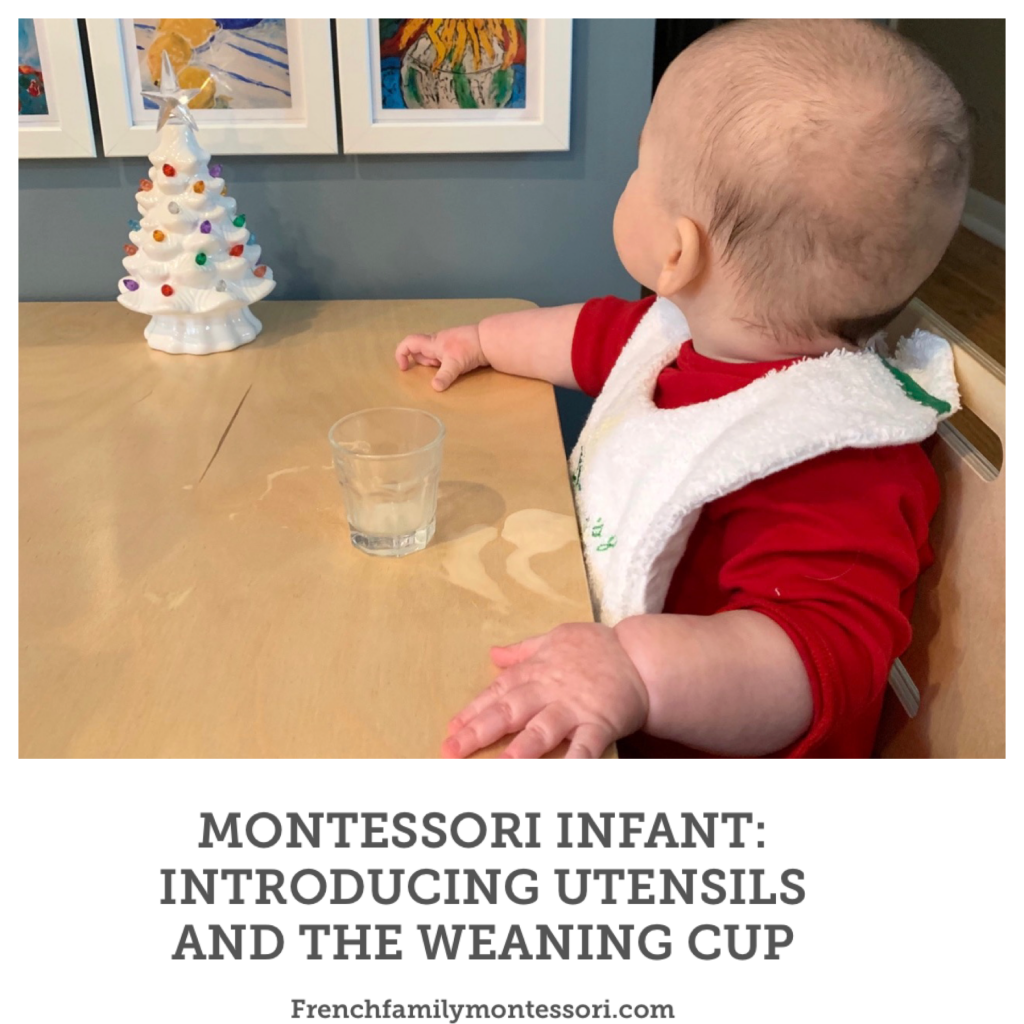
“There is no limit to the equipment of the ‘Children’s Houses’ because the children themselves do everything.” -Dr. Montessori’s Own Handbook
The girls first showed interest in drinking from a cup at five months. They would grab Hubby and my glasses, placing their mouths upon them. That was when we knew it was time to introduce their open cups.
For some families, infants may move from the breast or bottle to a sippy cup. For Montessori infants, they move from the breast or bottle to a small (think shot glass size) open cup. This will take time and practice to master. It requires skill, such as hand-eye coordination, and helps teach natural consequences– if we tip a full glass, we get wet, and if the glass cup is dropped, it breaks.
The glasses we start with are small glasses from Ikea. These are the perfect size for little hands to grip and lift. (Can you imagine trying to drink from a glass that is way too large?) Nor do they break easily–we want our children to learn natural consequences, but in a safe and controlled environment. To start off, we add just a small bit of liquid. This helps them control how much they consume and helps limit the mess. We used milk first, as that’s the liquid they are familiar with and would enjoy, and later water.
The first few times we offered their cups, we would gently lift the glass to their lips so that they may drink (you can view an example with V, here). They start to handle the cup with two hands and, with time and much practice, they begin to drink from it. We don’t talk during this time as we don’t want to interrupt their concentration. Once they have mastered this process, this will no longer be the case.
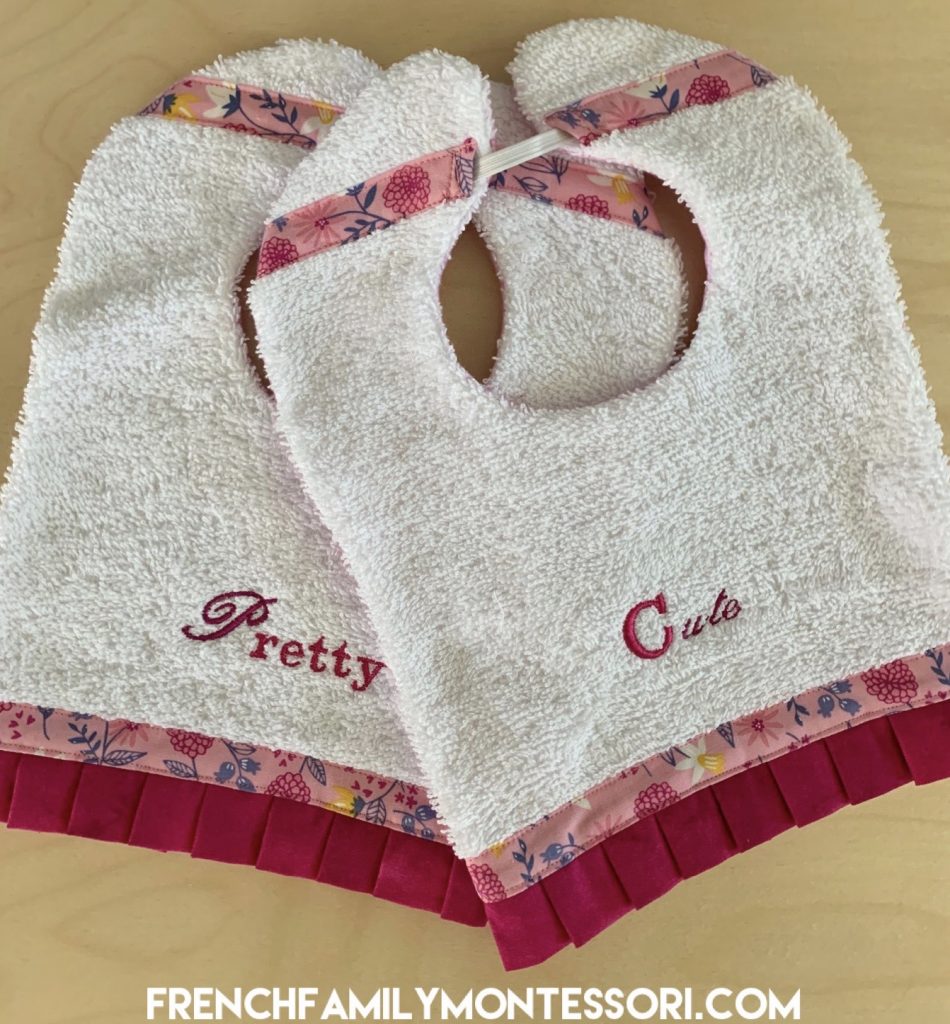
With the intent to provide them with as much independence as possible, we use bibs that they are able to pull on and remove themselves. The particular ones we prefer were gifts from their great aunt. She made them bibs with elastic so that the girls may pull them on and off (here are some that are similar). Bibs that button at the side, instead of the back, is another great option. (We do have gifted bibs that button in the back as backups, incase all others are soiled.)
When it was time to introduce solids, we used small espresso spoons, similar to these. They look like the spoons Hubby and I eat with and are the prefect size for the girls. The small design makes it so they can easily maneuver it.
We’ve never “fed” the girls. W have only offered them a puree-loaded spoon so that they may feed themselves. With much practice bringing items to their mouth, with teethers and such, at six months they were able to guide the spoon. While it may be a rather messy process, it’s rewarding for them.
While we initially handed them their spoons, in time we would slowly hand their loaded spoon to them closer and closer to their tray or plate. We do this until they are able to pick the spoon up on their own with ease. This helps prepare them to feed themselves completely and make associations between the food on their plate and their spoon.

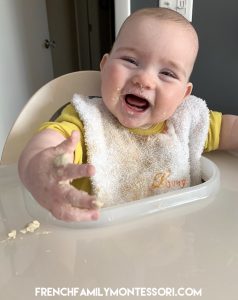

We introduced forks once they moved from all pureed food to foods that were diced. At this point, they were able to pick up their utensil that we still loaded. The forks we use (found here) are cocktail or fruit forks. They aren’t dull, as many forks designed for infants are. We chose these particular forks because we want to set them up for success. Now, as they are learning to spear food with their fork, they are more likely to accomplish that with a fork their size and just sharp enough to pierce food. They also learn natural consequences. E once poked her cheek and she is now more cautious, no longer waving her utensils around. We are always there supervising and ensuring their safety (as should be the case whenever children are eating).
Our family particularly enjoys the Duralex brand when it comes to plates, bowls, and slightly larger glasses that we use for smoothies (now that they are a little older and have more control). While made from glass in France, they are very durable and have survived many droppings to the floor. For foods that may be more difficult to keep on a plate, I’ve used the lids from our 8 ounce Pyrex containers. The raised edge really helps prevent the food from spilling onto the table while the girls scoop or spear it.
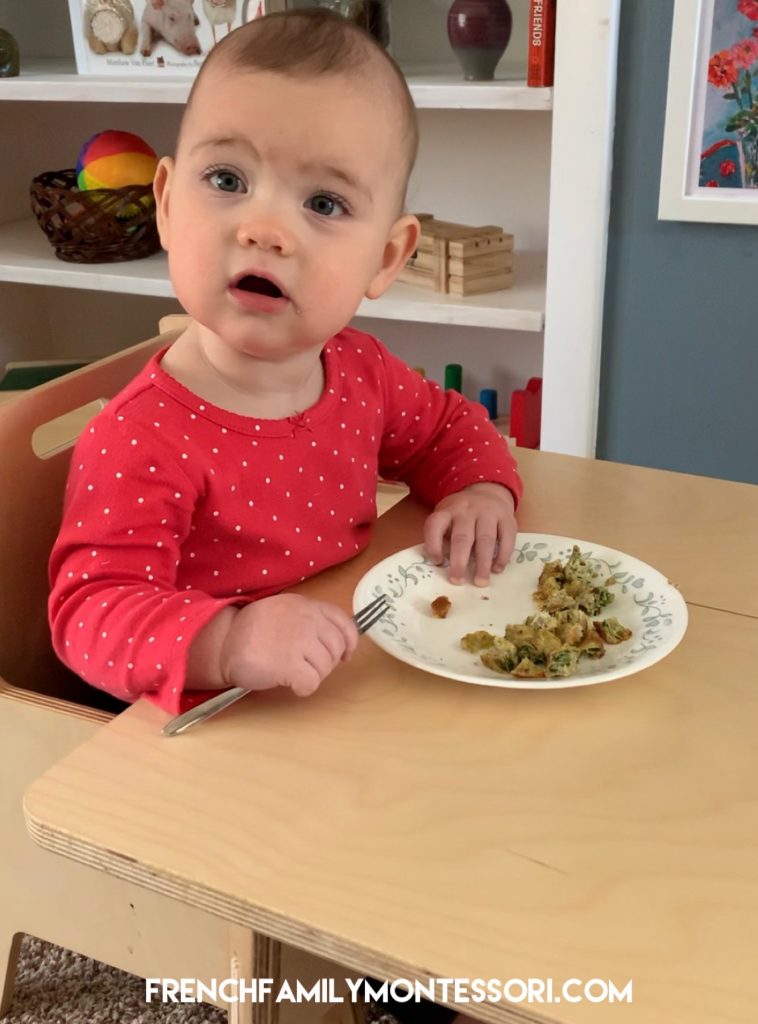
During lunch, the girls and I will sit together at their weaning table (use code FRENCH10 for a discount). If Hubby is home at that time, he will join us there as well. They have their placemat (one of their paintings with their place-setting traced on and then laminated for durability), their plate, and fork. We often save drinks for afterward, so that they are able to focus on eating. I will often spear their food and place the utensil back on their plate unless they are attempting to spear it themselves.
Their table is inviting with pictures that are hung at their level for them to enjoy and a centerpiece, often a plant or holiday/seasonally themed decoration, for their pleasure.
For dinner, we sit at the dining room table with them in their high chairs. They have a Svan and a Keekaroo (my favourite and it grows with the child). From personal experience, I can say that the Keekaroo is comfortable to sit in. (Tripp Trapp is another wonderful highchair we considered.) These particular highchairs are ideal as they allow the child to sit at the table, with the family, safely. As the child becomes more independent, they will be able to climb up and down from their chair without assistance.
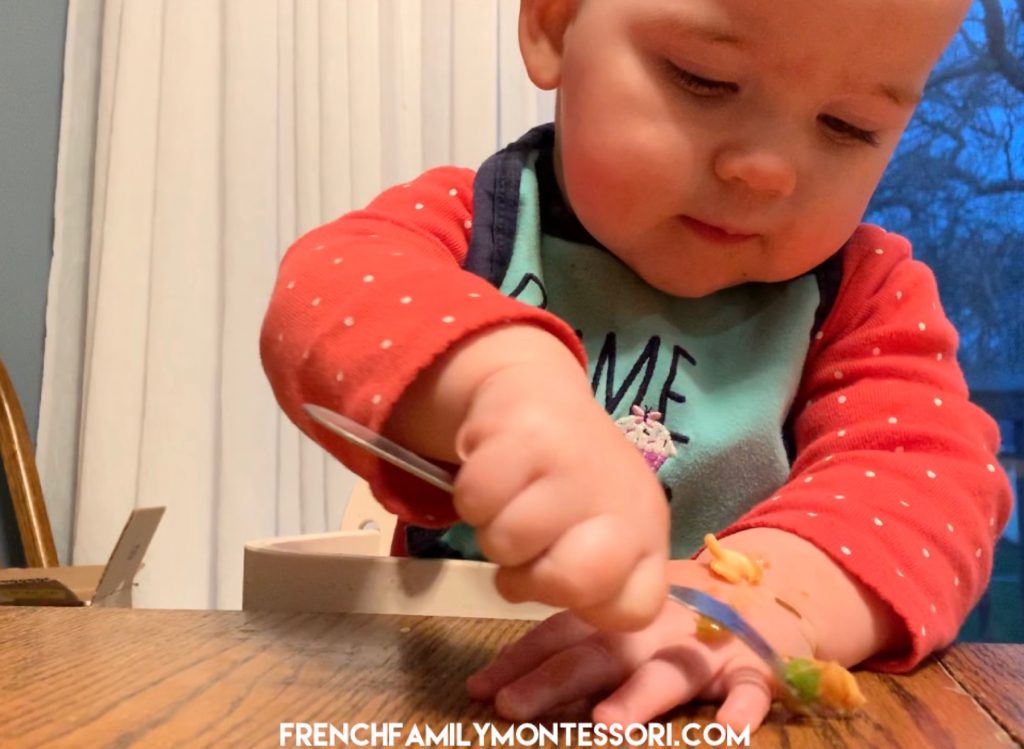
Shortly, we will be introducing their knives so that they may spread avocado, peanut butter, or hummus on their toast. When the child first begins assisting in cutting foods, we will begin with the egg slicer (this is the one we have, but here is one that is similar) with soft foods. A banana slicer is also a common tool that may be used.
The spreading knives are used just for that, spreading. When it is time to introduce more chopping that is independent of the egg or banana slicer, the wavy chopper knife will find a place in their kitchen. But more on knives and their use later.
Does your child use a weaning table, highchair, or combination of both?
This post contains affiliate links at no extra cost to you.

2 thoughts on “MONTESSORI INFANT: INTRODUCING UTENSILS AND THE WEANING CUP”